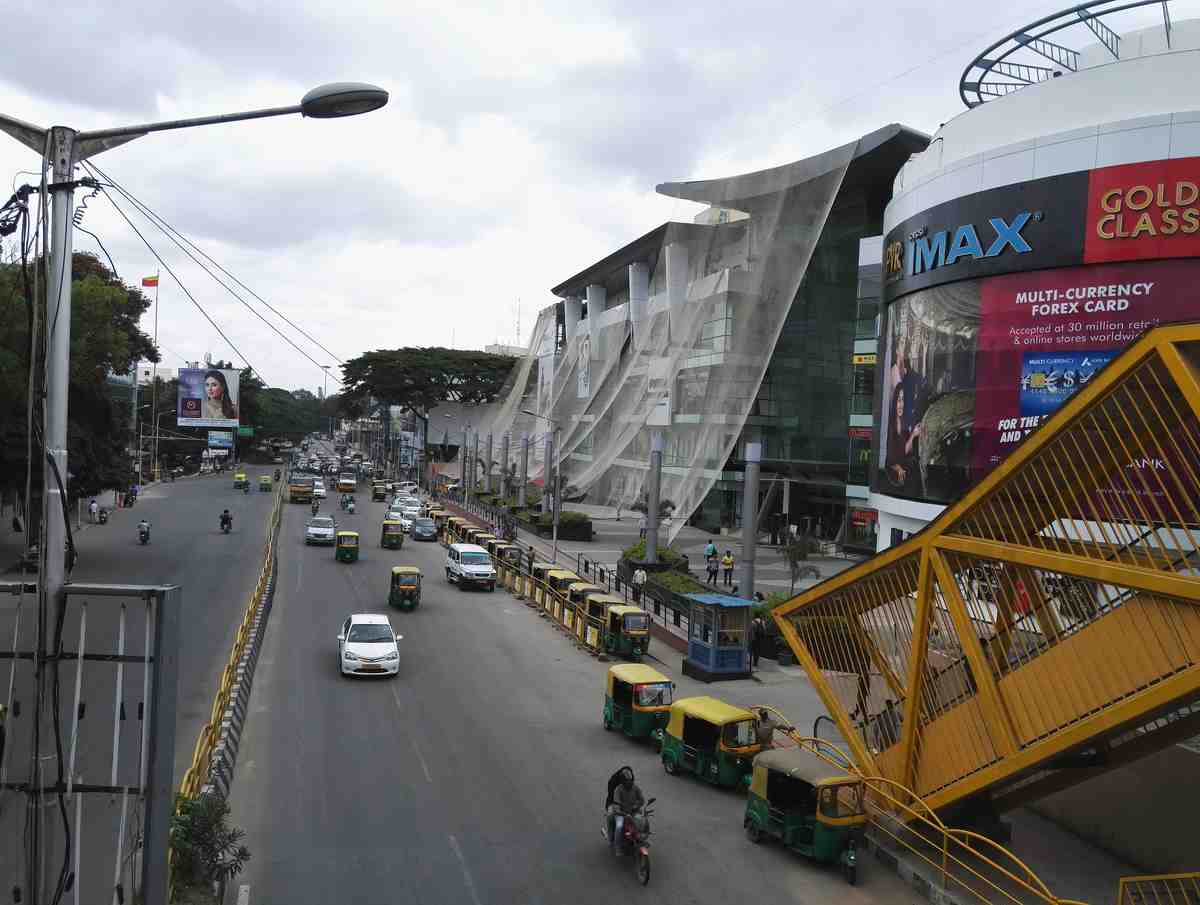On a humid Friday evening in Mumbai, a new ritual has taken hold. Teenagers compare seat rows and screen specs before they compare showtimes. Families pick a theater for the projection system first and the film second. Couples talk about laser projection, recliners, and sound stages with the same care they once saved for food and parking. India’s big screen is having a second coming, powered by premium formats in metros and a new wave of smart screens in smaller cities. This is not just a story about shiny auditoriums. It is a shift in taste, habit, and confidence that is changing how films are made, marketed, and monetized.
The signals are hard to miss. Exhibitors report growing appetite for IMAX and other premium formats across metro cities, and they are scheduling more titles to meet that demand. That is a practical programming choice, but it is also a cultural signal that Indian viewers are hungry for room shaking, wall to wall immersion that feels worth the trip. Multiplex chains and distributors expect a larger slate of IMAX releases this year, a reflection of audiences who want a more intense experience rather than simply a convenient one.
The infrastructure buildout supports the same story. India had just over thirty IMAX screens in early 2025 with additional agreements signed to lift that number significantly in the near term. Those figures may sound small compared with North America or China, yet the direction is what matters. Each new premium hall fills fast, raises per seat revenue, and nudges producers to consider spectacle, scale, and sound as design choices rather than afterthoughts. The result is a feedback loop where supply invites demand, then demand justifies more supply.
The second strand of the shift is more surprising. After a slow couple of post pandemic years, India’s largest exhibitor moved to launch so called smart screens in Tier 2 and Tier 3 markets. The idea is straightforward. Open more efficient auditoriums with modern projection and sound, trim operating costs with technology, and keep ticket prices sensible so families can afford to return often. Executives talk about adding roughly one hundred such screens a year on top of their usual expansion, a plan that would sprinkle upgraded moviegoing across dozens of towns rather than concentrating it only in the metros.
Financials tell another part of the story. Multiplex recovery is no longer a press release promise. Revenue growth is visible and losses are narrowing as footfalls stabilize and premium pricing helps the average ticket inch up without scaring away regulars. The important detail is that recovery is not coming only from giant one off blockbusters. It is coming from a steadier calendar in which many films cross respectable thresholds rather than waiting for a single event title to do all the heavy lifting.
That steadier calendar shows up in the nationwide numbers. The Indian box office in the first half of 2025 grew by double digits year on year and the number of films crossing the significant milestone range jumped noticeably compared with the prior year. One title led the charts by a wide margin, but the broader pattern was clear. The business rose on the back of more consistent performers, not only outliers, a pattern that makes exhibitors far more confident when they invest in hardware, leases, and staffing.
Technology is changing the upstream creative choices as well. Directors of large scale action, epic fantasy, and mythic science fiction are budgeting with premium projection in mind because the audience is signaling what it wants to buy. After a recent cycle where a futuristic Telugu language tentpole turned into a national and overseas phenomenon, producers in multiple languages are thinking less about a single regional win and more about how the film will look on a towering screen in sixteen cities on opening weekend. The pan India strategy is now joined at the hip with the premium screen strategy. Each depends on the other to justify budgets and to trigger the kind of ticket demand that makes headlines.
There is a creative upside that everyday viewers notice without needing a trade report to confirm it. The use of scale is different when a filmmaker knows the frame will be floor to ceiling. Night scenes carry richer blacks because projection has the horsepower. Music cues are mixed to travel through the auditorium and sit in your chest for a second before sliding away. Fight choreography is designed for clarity since blurs and shaky frames feel worse when the image is enormous. A premium room does not make a bad film good, yet it gives a good film more ways to delight you.
The business upside is visible in the moments between releases. When advance bookings open on a premium screen, tickets move earlier and faster than they used to. This helps the producer, who can feel demand rather than guess. It helps the exhibitor, who can staff for real traffic rather than best case scenarios. It also helps the audience, which gets a cleaner booking experience without the scramble. Technology behind the scenes is doing quiet work to keep the showtimes balanced across formats and to make sure that a family in Nagpur or Coimbatore can find a comfortable show at a fair price.
There is a risk in all of this, and the industry knows it. Premium heavy lineups can create a perception that cinema is becoming an expensive night out. That perception breaks if smart screens in non metros keep pricing within reach and if mid budget films continue to get healthy showtimes instead of being squeezed out by tentpoles. The first half of 2025 suggests that balance is possible. Many films crossed the important revenue mark, which means programming teams are not only blocking weekends for the biggest two or three titles. They are rotating smaller winners through good slots so word of mouth can do its job.
The shift also changes how actors and studios think about promotion. A film that plays in premium and standard formats at once needs trailer cuts that sell both versions. The premium cut leans into scale, texture, and sound. The standard cut leans into character, story, and jokes you can hear above a crowded street outside a single screen in a busy market. Social media campaigns have started calling out sound mixes and seating layouts by name, not as tech bragging but as comfort signals for families who want to know exactly what they are paying for.
If you step back from the showtimes and the seats for a moment, the macro picture looks healthier than it did just a year ago. The overall entertainment sector saw recovery in 2024 and digital strength carried into 2025, even though some post production segments slowed. Theatrical confidence has been returning because the ground truth is visible on weekends and holidays. People are back in auditoriums, and they are back for experiences that living rooms cannot quite replicate.
What does this mean for filmmakers coming up in the industry. It means writing with rooms in mind, not only frames. It means pushing for location sound when possible so that the mix breathes in the auditorium. It means budgeting for practical effects where they will read better than quick composites. It also means being honest about which stories need a giant canvas and which stories are better told with intimacy that will shine in a smaller hall. The smartest producers will build slates that do both, using the reliability of premium openings to take creative risks on the quieter films that become word of mouth favorites.
For audiences, the benefit is immediate. The choice set is wider, not narrower. In a single mall you can plan a premium date night, a kid friendly matinee that does not break the bank, or an after work mid row seat that still sounds terrific. Screen technology is getting better at handling both ends of the spectrum. Smart scheduling helps you catch popular titles a few days after the rush without feeling like the film has vanished. All of that removes friction, which is the number one reason people stop going to theaters. Make it easy, make it comfortable, and they come back.
There is also a long tail effect on streaming and satellite rights. Films that open strong across premium rooms tend to convert better when they reach living rooms because they arrive with a reputation for being an event. That reputation carries into music streams and short form clips, which in turn send more people back to cinemas for the next title in the same genre. In a country where word of mouth still sells more tickets than any marketing plan, this loop between big screen buzz and at home chatter is valuable.
None of this means the industry can relax. Premium hardware is only as good as the films that use it well. Smart screens must remain genuinely smart rather than a label on an ordinary hall. Most of all, pricing needs to stay friendly in the very places that are learning to love cinema again. The encouraging sign is that the strategies being announced this year suggest that exhibitors understand the stakes. They are not only polishing the crown jewels in Delhi and Mumbai. They are laying track into smaller cities and towns, where the future of growth really lives.
If the current pattern holds, India’s next phase of moviegoing will look familiar and new at the same time. Tickets bought on phones, couples leaning in during a thunderous audio cue, friends posing in front of life size standees before the show, and a country choosing again and again to share stories in a dark room full of strangers. The difference is the canvas. Bigger, brighter, smarter, and spread across more pin codes. Big Screen 2.0 is not a gimmick. It is a bet that the ritual of going to the movies still matters, and the early numbers say the bet is paying off.
Photo Credit: iStock









